Fanged, Skinned & Shrieking
Fanged, Skinned & Shrieking is concerned with notions of animality and its attendant figurations across history. Comprised of drawings and sculptures, the exhibition draws upon myth, philosophy, art history and online subcultures in order to contemplate the ways in which animality has been used to disrupt and oppose idealised conceptions of modern culture and society. Whether viewed as divine or debased, to become a beast, to will oneself into an animal state, is to voyage into the feral wildernesses beyond the technological polis of enlightened, liberal humanism. In a poetic register, Fanged, Skinned & Shrieking considers how artists and writers of the past have explored the transgressive potential of the ‘human-animal’ so as to recognize its many resonances and manifestations in our present-day culture.
 |
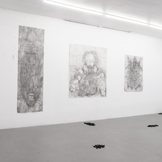 |
 |
 |
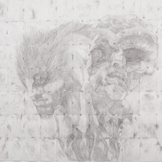 |
 |
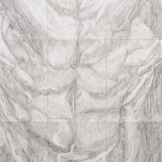 |
 |
 |
 |
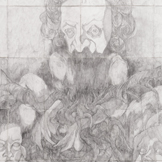 |
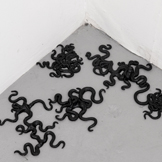 |
 |
 |
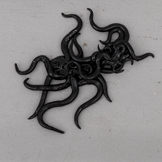 |
 |
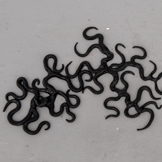 |
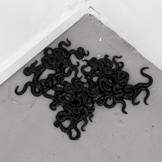 |
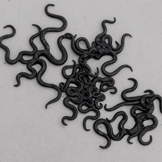 |
 |
 |
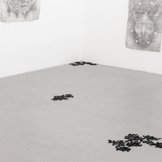 |
In terms of content, the drawings featured in Fanged, Skinned & Shrieking are a heady confluence of references– ranging from art history, mythology, philosophy, digital subcultures and literature – consolidated into grotesque forms of self-portraiture.
The sources I drew from to create the drawings all relate, in some way or another, to the concept of animality, the beastly urges and impulses that simmer violently beneath the layers of socialisation imposed upon us by the taboos and laws mandated by civilisation. The absurd humour of the exhibition is derived from the sudden pivots between the references across and within the drawings, where the mythic and ancient is suddenly juxtaposed with the modern and quotidian.
Enmeshed within the absurdity, however, is a serious assertion about the evolving use of the human-animal as a symbol of opposition to modern culture and society. To be more specific, through the variety of references employed in and across the drawings, the exhibition gestures to how the transgressive potential of animality - as articulated and represented by writers and artists of the past - has been co-opted by various niche political subcultures and dissident movements online, from extreme eco-primitivists to men separationist groups. However, by implicating myself within the drawings, I recognise that I too harbour these animalistic desires and urges and, at times, wish to express them with wild and brutish abandon; I am not commenting on this from afar but, rather, wrestling with these exact issues and feelings presently.
Beyond the content, the drawings are all made up of smaller, A4 sized pieces of paper that are held together by masking tape and pins. This allowed the images to become incredibly large-scaled (one piece consists of 77 pieces of paper) but also foregrounded the materiality of the drawings themselves, lending them a dirty, physical presence. Indeed, as the exhibition continued, the masking tape started to creep and spill out from behind the drawings, causing some of them to warp and loom out towards the viewer as if they were about to lunge.
Exhibited alongside the drawings are a series of black tentacular sculptures, organised into small groups peppered throughout the gallery. Painted with a glossy finish, they looked as if they were writhing and undulating worm-like under the gallery’s fluorescent lighting. The idea was for them to appear ambiguous, for their alien forms to look both tortured and ecstatic. Additionally, their placement throughout the gallery forced the viewer to be wary of their own movements, to be cognisant of their own bodies as they moved throughout the space .
